Nadine Dinter PR is an owner-managed agency for media relations, PR consulting, and art administration. With its special focus on photography, Nadine Dinter PR supports cultural institutions in Germany and beyond, including museums, galleries, foundations, festivals, and private collections. The Berlin-based agency also works across a variety of sectors in the fields of contemporary art, lifestyle, and art & commerce.
Sebastião Salgado. A Retrospective
Galerie Bene Taschen is pleased to present a selection of the life’s work of Brazilian photographer Sebastião Salgado (1944–2025) in a retrospective exhibition. Sebastião Salgado is regarded as one of the most important photographers of the 20th and 21st centuries. The exhibition Sebastião Salgado. A Retrospective brings together works from his series Genesis, Workers, Gold, Exodus, and Other Americas. At the same time, the Rautenstrauch-Joest-Museum in Cologne will present the solo exhibition AMAZÔNIA – Photographs by Sebastião Salgado.
Together with his wife Lélia Wanick Salgado, Sebastião Salgado was committed to environmental protection. The couple founded the Instituto Terra, an organization dedicated to reforesting a region of Brazil’s Atlantic Forest, protecting water sources, supporting scientific research, and promoting environmental education. More than 3 million trees have been planted in this area.
“For me, it is the last frontier, a mysterious universe of its own, where the immense power of nature can be felt like nowhere else on earth. Here is a forest stretching to infinity that contains one-tenth of all living plant and animal species – the world’s largest single natural laboratory.” (Sebastião Salgado, 2021)
...
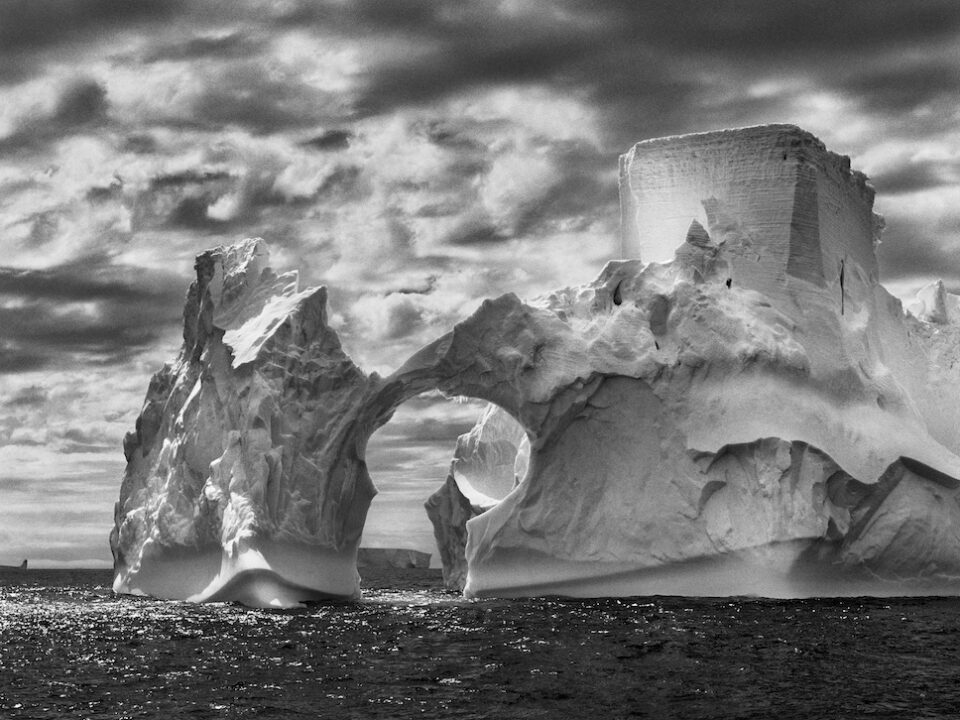
TransMutations – the Alchemy of the Self
On 31 October 2025, photographer Nadine Dinter opened her latest exhibition, TransMutations, at Atelier Yves Sucksdorff in Berlin. This series is Dinter’s homage to the sculptures she has photographed around the world since the late 1990s, exploring the visual and spiritual fusion of transient human bodies with immortal statues. In a discourse of reflection and meditation, eight works are presented in an ethereal installation, offering an intimate first glimpse into this long-term project.
Since 1991, Nadine Dinter has been capturing the raw stillness of form and flesh. While she began with portraiture, her practice soon evolved into an expansive archive of statue and cemetery photographs. From graveyards in her hometown of Berlin to legendary sites like Père Lachaise in Paris, and burial grounds in New York, New Orleans, and Mauritius, the necropolis has become her studio and sculpture her muse.
Yet she is not interested in mere photographic documentation. Instead, she seeks to capture a distinct mood – an almost tender, human aura within the sculptures and their apparent vitality – emphasized through carefully chosen lighting situations, dramatized perspectives, and the shifting atmosphere of the seasons. The object becomes the subject. Her haunting work blurs the line between presence and absence, beauty and decay, opening space for something entirely new. Her images are true to the spirit of transmutation – a term that, in its classical scientific sense, encompasses the transformation of matter, yet in a broader sense also evokes the profound alchemical metamorphosis of a person.
Inspired by this philosophy and rooted in her second passion, body photography, the TransMutations series fuses sculptural images with nudes in auratic stagings that evoke spirit, energy, and metamorphosis. Women’s bodies seem to emerge from the statues, entering the space and inviting viewers to forge a unique connection. This expanded dimension symbolizes detachment from the present, a shift in perspective, and ultimately the transition from being to becoming.
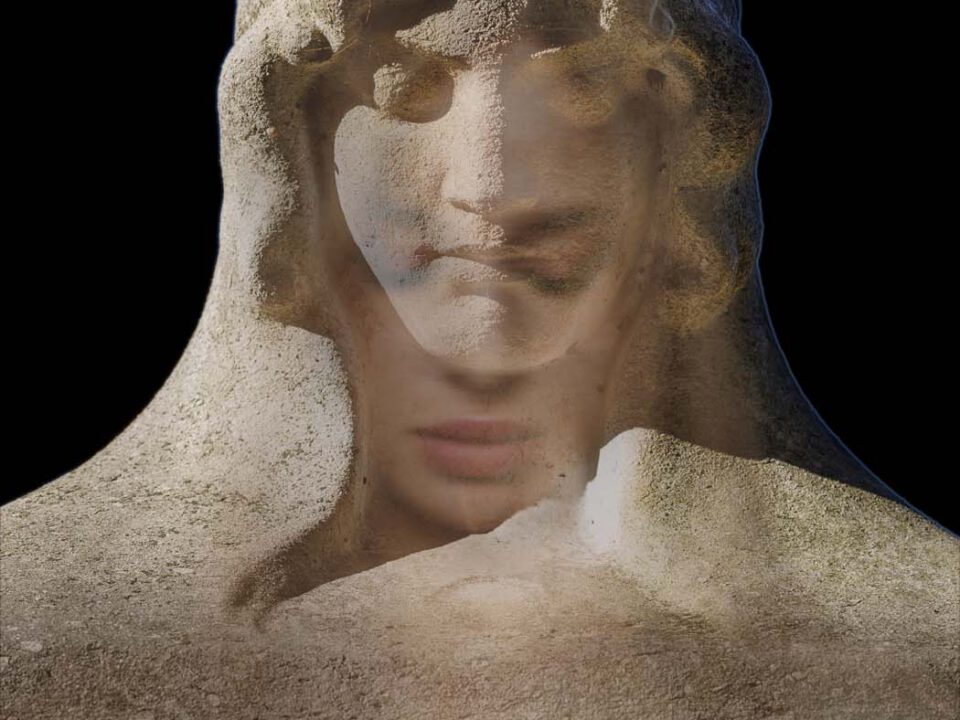
Dialogues. Collection FOTOGRAFIS x Helmut Newton
On 4 September 2025, the Helmut Newton Foundation in Berlin opened its new double exhibition: Newton, Riviera and Dialogues. Collection FOTOGRAFIS x Helmut Newton.
With Dialogues. Collection FOTOGRAFIS x Helmut Newton, the Helmut Newton Foundation presents a fresh perspective on the work of its founder. This exhibition takes the form of a playful visual experiment – one that fully unfolds through the viewer’s on-site experience.
On two occasions in recent years, the Helmut Newton Foundation has presented private photography collections in addition to its solo and thematic group exhibitions. The first was Between Art & Fashion (2018), showcasing Carla Sozzani’s private collection from Milan. The second, in 2024, was Chronorama, originally presented at Palazzo Grassi in Venice and based on the photographic holdings of the Condé Nast Archive, which had recently become part of the Pinault Collection. Helmut Newton featured in both, having worked extensively for Condé Nast publications such as Vogue, Vanity Fair, and Traveler over the decades.
Both shows were distinctly curated for the foundation’s exhibition spaces in Berlin: Between Art & Fashion was arranged alphabetically by nearly 100 featured photographers, while Chronorama followed the chronology of image creation or publication in Condé Nast magazines. Each presented a wide range of iconic images from the history of photography.
This same ambition continues – this time in a new format. The current collaboration, with the Collection FOTOGRAFIS of the Bank Austria Kunstforum Wien, comprises more than 60 diptychs. Inspired in part by the Dialogues newsletter from Milan’s Collezione Ettore Molinario – which regularly pairs contrasting images from its archive – the exhibition brings selected photographs from the Viennese collection into dialogue with works by Helmut Newton from the foundation’s own holdings. Curators Bettina M. Busse (Kunstforum) and Matthias Harder (Helmut Newton Foundation) paired the images through an intuitive, associative process. Each diptych features two portraits, still lifes, landscapes, architectural images, or surreal reinterpretations of fashion and nude photography – shown side by side across different eras. At times the connections are formal, at others thematic. Some combinations may appear humorous or even arbitrary at first glance, but in every case, the interplay between images opens up a broader space for imagination.
This new experimental exhibition at the Helmut Newton Foundation explores the many facets of human experience and the evolution of social life over the course of a century – through the juxtaposition of Newton’s photographs with “partner images” by Diane Arbus, Alfred Stieglitz, Margaret Bourke-White, Elliott Erwitt, Florence Henri, Duane Michals, Paul Strand, Man Ray, August Sander, Judy Dater, Otto Steinert, and other key figures from the photographic canon of the 19th and 20th centuries. These pairings – sometimes complementary, sometimes contrasting, always unexpected – have never been presented together before. The interplay of iconic and lesser-known works reveals not only how Newton’s photography engaged with broader photographic traditions, but also how remarkably similar visual ideas have often emerged independently in international photography – sometimes even many decades later.
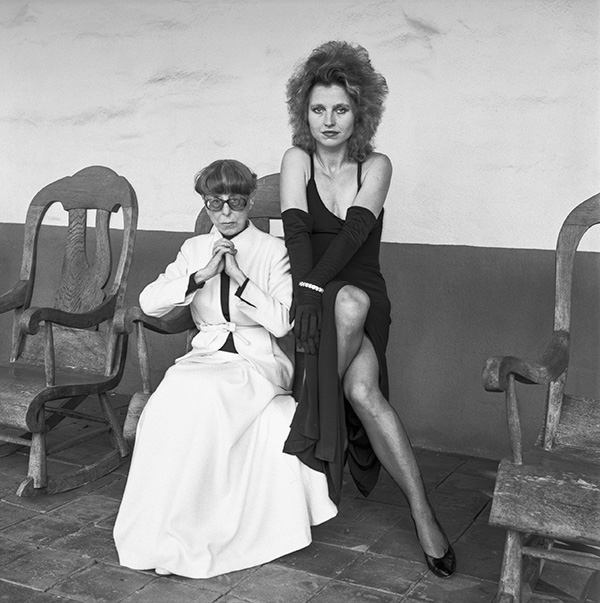
Newton, Riviera
On 4 September 2025, the Helmut Newton Foundation in Berlin opened its new double exhibition: Newton, Riviera and Dialogues. Collection FOTOGRAFIS x Helmut Newton.
In the summer of 2022, the Helmut Newton Foundation’s director Matthias Harder and Guillaume de Sardes co-curated the exhibition Newton, Riviera for the historic Villa Sauber in Monte Carlo. For the first time, this late-life home of the Newtons – and the surrounding region where many of Helmut Newton’s iconic images were created – took center stage. A selection from that exhibition will now be shown in Berlin, running in parallel with Dialogues. Collection FOTOGRAFIS x Helmut Newton. This continues the foundation’s focus on Newton’s personal and professional environments, following acclaimed exhibitions such as Hollywood (2022) and Berlin, Berlin (2024/25).
At the turn of the year 1981/82, Helmut Newton and his wife June relocated from Paris to Monte Carlo. The move marked not only a shift in their private lives, but also a dramatic change in Newton’s photographic settings and perspective. Gone was the effortless elegance of Parisian chic; in its place, Newton turned his lens on the Riviera’s glamorous social scene – often set against the stark concrete walls of Monaco’s many construction sites. Even the modest garage of their apartment building became a stage for his bold, conceptually sharp fashion stories for magazines and designers, as well as for the enigmatic black-and-white series The Woman on Level 4.
Newton’s love for the French Riviera, however, ran deeper still. As early as 1964, he and June purchased a small stone house near Ramatuelle, not far from Saint-Tropez. It became both a summer retreat and a space for creative work, as evidenced by black-and-white images shot for Vogue US and vibrant color photographs for the Pentax calendar. The exhibition includes a wide range of early prints, including unique vintage and lifetime prints.
During the 1980s and ‘90s, Newton’s unconventional fashion shoots took him to Cannes and Nice, and later to other parts of the Riviera: Cap d’Antibes, Saint-Jean-Cap-Ferrat, Menton, and even across the Italian border to Bordighera. Across these locations, he explored his three signature genres – fashion, portrait, and nude – with the region’s distinctive light playing a central role. At times, he also captured serene nocturnal seascapes from his Monaco balcony. Similarly atmospheric landscapes emerged during the mid-1990s in Berlin, culminating in his 2001 gallery show Sex and Landscapes at Galerie de Pury & Luxembourg in Zurich. A version of the exhibition was also presented at the opening of the Helmut Newton Foundation in Berlin in June 2004, shortly after Newton’s death. Now, more than 20 years later, this new presentation of large-format original prints brings that trajectory full circle.
Photographs taken along the Riviera appear in nearly all of Newton’s exhibitions and publications – from White Women in 1976 to Yellow Press in 2003. The coastline served as a backdrop in countless ways – sometimes spectacularly, sometimes subtly. His final photo shoot, a fashion series for Vogue Italia, also took place on the Monaco coast.
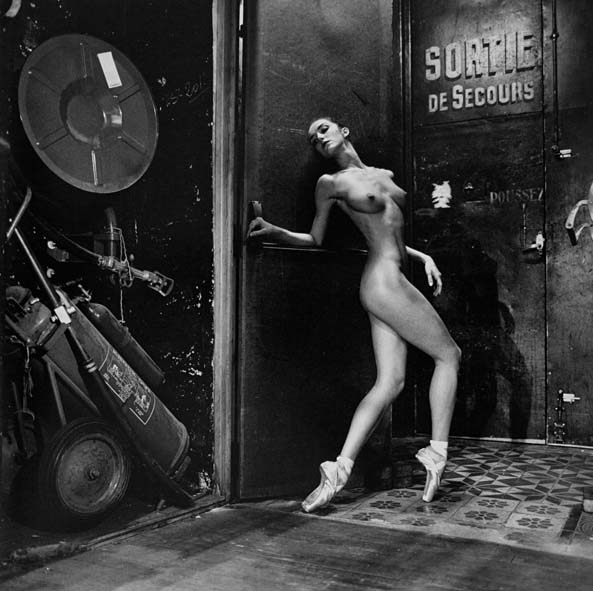
Roger Ballen: Spirits and Spaces
For 50 years, the internationally acclaimed photographer Roger Ballen has been inviting viewers to explore the human condition and that place where the conscious and subconscious intersect through his exhibitions, installations, and over 20 books. Roger Ballen: Spirits and Spaces (Thames & Hudson, September 30, 2025) is the first monograph to present Roger Ballen’s venture into color photography—a visual revelation that remains grounded in the haunting, absurd psychological space of the Ballenesque.
In his essay for the book, Ballen reflects on how color contributes to his considerations of the physical and metaphysical, "As I had delved deeper into color photography, I had begun to appreciate how it adds a distinct ethereality and complexity to my work, enriching the psychological spaces within my images."
Having previously worked solely in black and white, Ballen was inspired to explore this shift after receiving a Leica SL camera as a gift in 2016. Opening up to the potential of colour in his work, Ballen re-examined his images' relationships to light, depth, texture and form. With nearly 100 photographs, the much-anticipated new monograph Spirits and Spaces eloquently captures the bizarre world of Roger Ballen, where animals and Art Brut-like drawings dominate, and humanity is reduced to obscure figures or fragmented body parts.
Roger Ballen: Spirits and Spaces is divided into six sections each including a brief preface written by Ballen framing the particular grouping. The titles: Childhood, Spectre, Animus, Shadow, Libido, Chaos reference Jungian archetypes of the subconscious, and invite viewers to further deepen their engagement with the layers present within each image. Symbolism and metaphor combine with shape and form throughout his images, to provide reference points that lure the viewer into their own subconscious and memory bank.
Created in conjunction with Ballen’s artistic director Marguerite Rossouw, the new colour images in Spirits and Spaces, were produced in a claustrophobic space constructed of worn, wallpapered wooden panels and with minimalistic lighting. Here, in this dense, oppressive environment, Ballen creates what might be seen by many as a world that is unexplainable in words: one in which absurdity, chaos, comedy and tragedy apparently exist side by side.
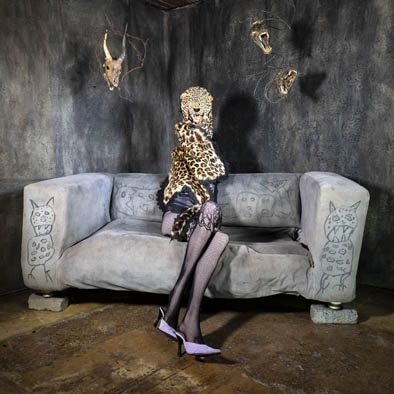
Save The Dates
20 December 2025, 11 am - 3 pm:
5 January 2026:
30 April 2026:

